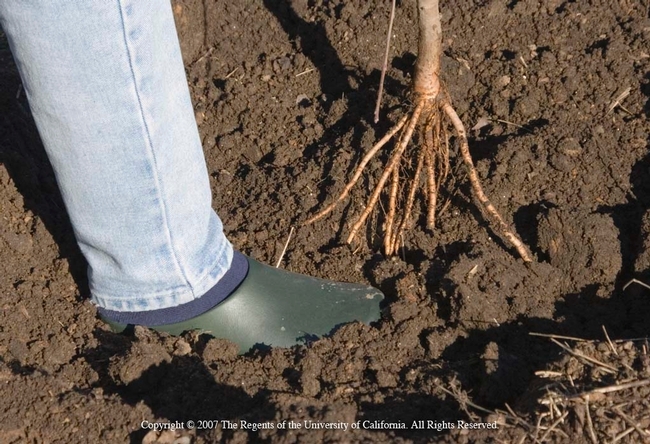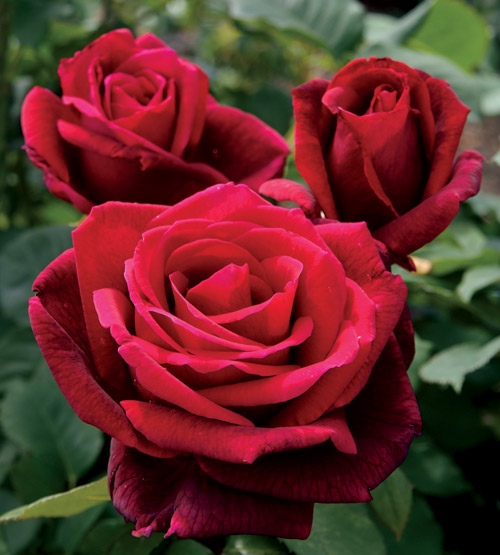
If I were to plant fruit trees, my first picks would be cherries, plums, pluots, peaches, nectarines and apricots. These trees are not as highly disease and pest prone as apples and pears. Peaches and nectarines need to be sprayed for peach leaf curl and bacterial canker can attack most of these trees. However, apples and pears are more difficult, because of the prevalence of fireblight and codling moth in our area. Not that I don't have lots of them, but they do take more attention to keep trees disease free and to get a crop. Check out Sunset Western Garden book for listings of fruit tree varieties that will do well here.
Local nurseries like Port of Stockton carry a good selection of fruit and nut trees, black berries and blueberries. Delta Tree Farm also carries bare root fruit trees. Peaceful Valley Farm Supply has a good selection of bare root products as does Raintree Nursery. Big box stores also carry selections of bare-root trees and berries. One tip on planting blueberries—make sure that you lower the pH by using soil sulfur and compost, before planting them.
Roses are beautiful and great flowers if you don't mind the annual pruning and dead heading chores. Some rosarians 
There are a few thousand named rose varieties in various growth styles from Hybrid Teas, Grandifloras, Floribundas, Polyanthas, Miniatures, Mini-floras, Climbers, Old Garden roses, and shrubs. The rose universe is growing with new varieties produced each year. Newer roses tend to have been bred for disease resistance, which is a good feature and fragrance is also making a comeback. Older roses with good reputations for flourishing and disease resistance are good too. The American Rose Society annually produces a handbook of roses that scores them based on scores by rosarians across the country: Perfect; 9.0-9.9=Outstanding; 8.0-8.9=Excellent; 7.0-7.9=Good; 6.0-6.9= Fair. This handbook is produced annually and is available to members of the American Rose Society. Few roses merit the perfect score, but I generally wouldn't plant one that didn't score well above 7.
Baldo Villegos is a renowned Rosarian living in Orangevale, CA who has grown hundreds of roses. He has put together a list of 100 roses recommended by the Sacramento and Foothills Rose Societies for growing just about anywhere. To access this list go to his website. The Regional Rose Society District that consists of California, Hawaii and Nevada also maintains a list of regional favorites.
Some of my favorite roses would be: Hybrid Teas: Arizona, Aroma Therapy, Black Magic, Brandy, Dainty Bess, Double Delight, Honor, Mr. Lincoln, Oklahoma, Olympiad, Peace, Perfect Moment, Perfume Delight, Proud Land, Touch of Class, Tropicana; Florabundas: Gene Boerner, Julia Child, Iceburg; Polyanthas: Cecile Brunner. I don't have many of the other types and those I do have are still on trial. Rose blooms are most abundant in the spring and fall, but with diligent deadheading, they bloom all season.
Pruning time for roses is also at hand and pruning roses is a task that many approach with trepidation, but it is really not that difficult. The goal is to thin, shorten and invigorate the plant. Keep the rose bush open for light penetration and air circulation and select for younger canes that will replace the older, spent ones. This will provide more blooms and larger ones from the more vigorous young canes. There are lots of good rose pruning guides available in books on roses. I found an excellent online guide by Baldo Villegos that is comprehensive for all types of roses.
For more information, visit the UC CA Garden Web rose page.